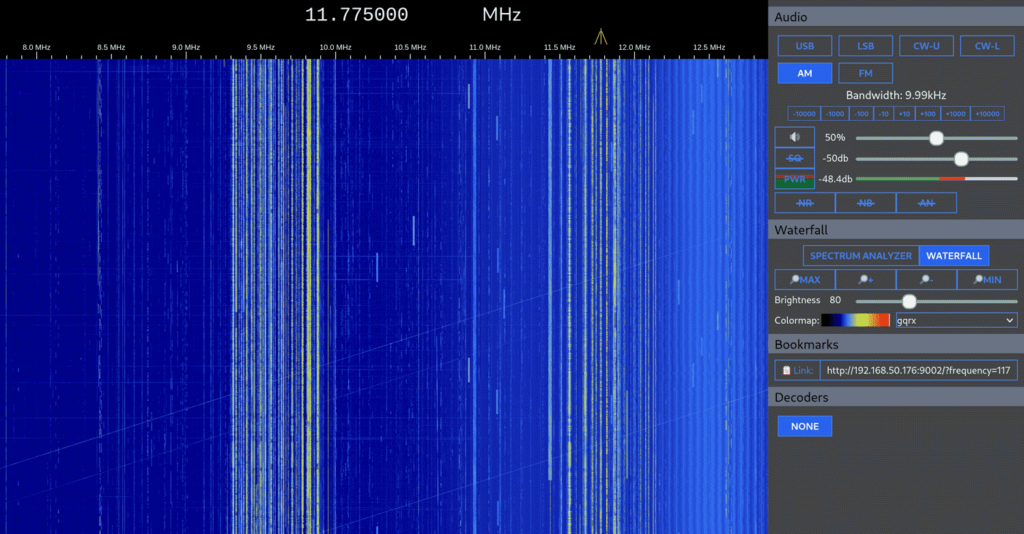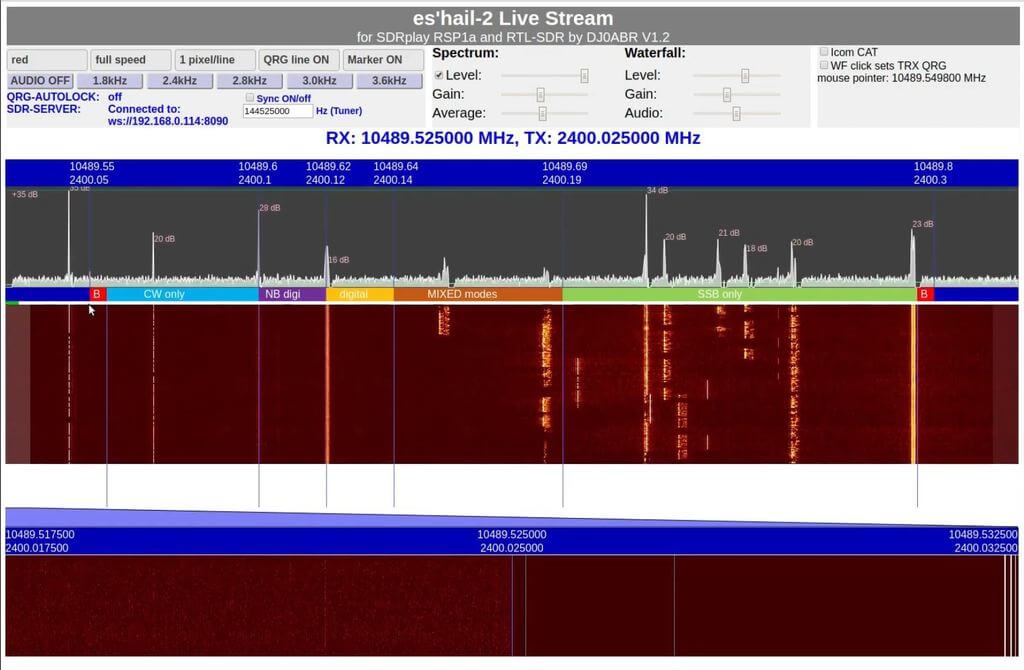PhantomSDR: WebSDR Software for the RX888 MKII and Other SDRs
Recently Reddit user magicint1337 brought attention in a post to PhantomSDR, a web SDR program for the RX888 MKII SDR. PhantomSDR is not new, having been first uploaded to GitHub two years ago, but it appears that it hasn't gained much attention so far. Web SDR software allows an SDR to be accessed publically or privately remotely over an internet connection. He writes:
PhantomSDR is a Web SDR Software that can sample the whole HF Band using the RX888 MK II, it utilizes the GPU to do so efficiently, the CPU can also be used but has to be strong enough to handle it.
The Software itself supports nearly all Devices, as they are passed from another program like rx_sdr to PhantomSDR. It features high quality Waterfall Zoom efficiently, it can handle hundreds if not thousands of users depending on the Hardware and is open source. There is also a sdr-list linked below.
It's a good alternative to OpenWebRX or WebSDR as it's easy to set up and can handle higher bandwidths and more users than the other alternatives i named. Decoders will also come and run in WebAssembly on the Client, so the Server has no Usage and can handle many Users. It can also handle higher bands, for example VHF.
It is developed further and further because it's open-source and everybody can help develop it further!
List: https://sdr-list.xyz
Software: https://github.com/PhantomSDR/PhantomSDR
The author of PhantomSDR also chimes in on the comments noting:
Author of PhantomSDR here, wondering where all the traffic to the github repo came from and discovered someone has posted it here.
This is started off as project to publish a self-made direct sampling SDR to the internet. Then it grew to became a learning project about SDR and DSP. I picked RX888 as the SDR to put in the screenshot due to it being easily available as compared to the one I built myself. This wasn't really meant to be much apart from a fun learning exercise!
I wanted to open source this because I think others might find it useful also to host higher bandwidth SDRs, or just have a different user interface.
sdr-list.xyz is made by a contributor to the project, but I would prefer to have more infrastructure under the PhantomSDR domain. This will happen once I get a suitable domain name and the server code up. And yes it will be https and the server will be open source.
Currently, there appears to be one publicly hosted server that can be accessed via the list at sdr-list.xyz.
This web SDR software is reminiscent of the University of Twente WebSDR software which is currently closed source. It is also similar to KiwiSDR and OpenWebRX which is also an online web-based SDR system.
We note that there has been controversy over the RX888 SDR in the past as developers of popular software in the SDR community such as SatDump and SDR++ have frowned on it due to its poor driver support, the lack of any developer support from the manufacturer, and poor overall RF design.
UPDATE: Jie Feng, the author of the software would like to add that the official server list is at https://phantomsdr.github.io/servers. sdr-list.xyz is a third party list set up by a fan, and Jie is working out how to integrate it with his official list. Jie also notes that PhantomSDR also supports many other SDR's like RTL-SDR, HackRF, SDRplay RSP etc.
Jie has also provided a follow-up Reddit post here.

